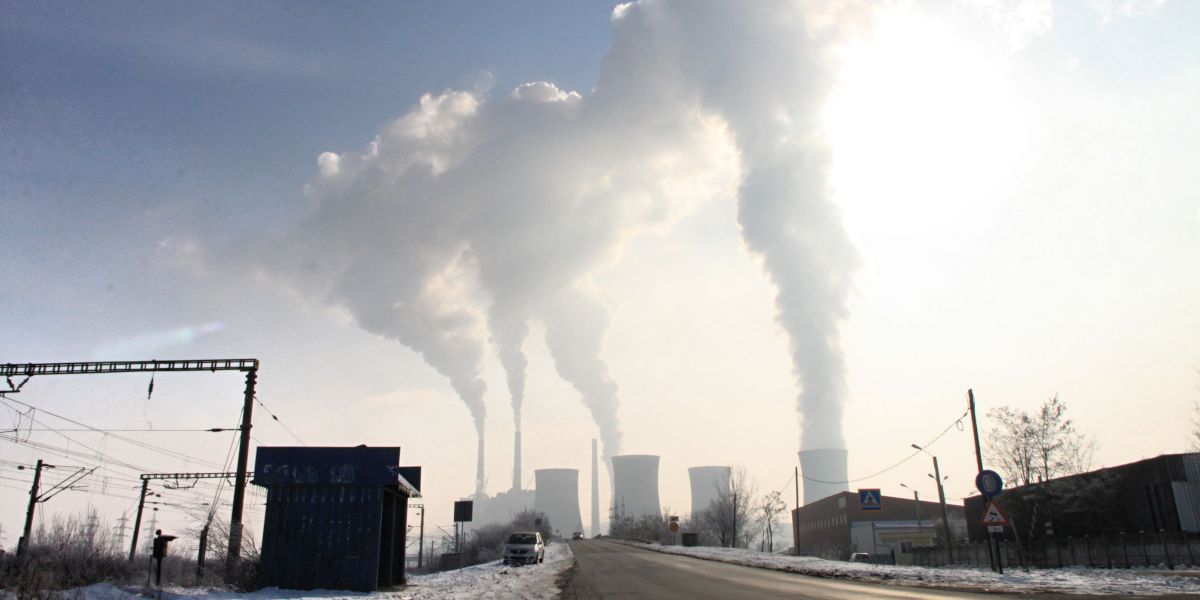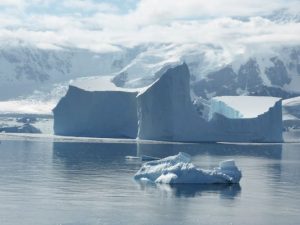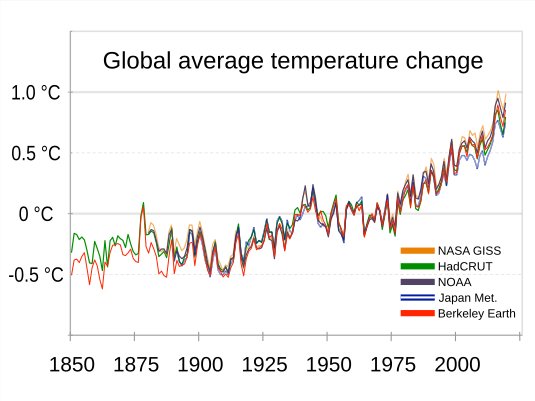What is the biggest threat humanity will have to face in the upcoming decades? In our current situation, many would assume that viruses may form a large risk in the future, yet the real danger is equally invisible but capable of far more than a virus: Climate change. While many fail to approach this problem or even deny its existence, experts are sure that humanity will have to resolve it soon before it is too late. But are we aware of how this problem developed, and more importantly, do we know how to stop it?
 A sad picture for climate activists. The combustion of fossil fuels results in a heavily growing concentration of CO2, or carbon dioxide, in the air, which is believed to be the main cause of climate change. Photo courtesy of Pixabay
A sad picture for climate activists. The combustion of fossil fuels results in a heavily growing concentration of CO2, or carbon dioxide, in the air, which is believed to be the main cause of climate change. Photo courtesy of Pixabay
__________________________________________________
This value, this little temperature difference, is currently the reason why we even consider climate change a threat.
This value represents the average difference in temperature experts have recorded since 1880, just after the Industrial Revolution.
A value this little can seem like little more than a measuring error, but it is substantial as it initiates a vicious cycle with the capacity to form a fatal threat to humanity.
Almost ironic if we remember that humanity is believed to have created this problem in the first place.
But let’s move back in time.
The start of industrialization in the 18th and 19th centuries and the faster-growing industry meant, above all, significant increase in the use of fossil fuels and its growing importance to society.
Travel, transport and production are all industries still largely depend on fossil fuels, especially transportation through steam locomotives (particularly popular during times of industrialization), the automobile and air traffic, all of which utilize the combustion of fossil fuels to carry us from point A to point B.
The problem with the combustion of fuels is that they emit enormous amounts of CO2 into the air, which can also be described as “greenhouse gases.”
Those gases are generally a natural process that even occurs when humans exhale. However, it is the quantity that makes those gases become a toxic phenomenon.
Before industrialization, greenhouse gases had been on a fairly stable level, never exceeding a concentration of 300-parts per million (ppm) in the air within the last 800,000 years.
Ever since we started relying on fossil fuels, this level was recorded to be increasing exponentially, breaking through the barrier of 300 ppm first in 1950 and currently reporting a value of 410 ppm and rising.
At this state, greenhouse gases become toxic for the environment because they promote the warming of the earth’s surface.
They do so because the sunlight that is typically reflected from the earth’s surface, leaving the atmosphere, becomes trapped between the surface and the thick layer of greenhouse gases formed in the air.
In this way, the sunlight consistently heats the ground and contributes to a rising temperature around the globe.
Yet climate change only begins here.
As mentioned before, the alteration of the average temperature initiates a chain of events that is destructive to the planet.
Something that is frequently brought up in correlation to the rising temperature is the ice masses in Antarctica and Greenland suffering from these warmer conditions.
Ice sheets have two major functions. For one, they have an important purpose in the regulation of temperature and climate, as they moderate the global climate.

The other function is leveling out the sea level.
This may seem unspectacular, but as we now know, higher temperatures naturally cause ice to melt.
Since 2002, the ice sheets in Antarctica and Greenland lost a combined mass of astonishing 7,433 gigatons (as of Sept. 16, 2020).
To rate this value, we have to understand that one gigaton (gt) equals one billion tons of ice-masses that have melted in just 18 years.
Since 1880, experts found that shrinking ice sheets caused the sea level to rise by 8-9 inches, “with a third coming from just the last two decades,” according to scientists.
And this rate is only growing faster every year.

Shrinking ice-masses then ultimately mean the total mass of ice that moderates our climate becomes less, which means that our planet is warming up even faster.
An endless dangerous cycle, which cannot be reversed once too advanced.
We still haven’t discussed how this ultimately affects people.
Why should we care if some ice sheets shrink? Unfortunately, this approach is a popular and toxic way of thinking.
As mentioned earlier, it is an invisible danger, and just like in times of COVID-19, it requires all members of society to pull on one string to effect change.
We know by now that the future can and will bring many more dangers if we fail to control the issue. We start to feel those changes even in our current generation.
Higher temperatures are proven to be connected to more frequent and intense droughts in the warmer regions of the world, while in other parts they support the formation of hurricanes and extreme weather events.
Scientists analyzed this trend and concluded that the likelihood of the formation of Category 3 or higher hurricanes increases by 8 percent every decade.
Beyond that, the ever-rising sea levels hold the power to literally swallow entire coastal regions around the globe, taking away habitat for flora and fauna.
Coastal regions in the U.S. alone inhabit roughly 127 million people, which is roughly 40 percent of America’s population.
Losing this territory would have devastating effects on society and the way we live our lives.
So, how can we resolve this issue?
Generally speaking, we all have to reduce our carbon footprint, which represents the amount of greenhouse gases we emit through our everyday activities, such as travel or meat consumption, as those are two large contributors to greenhouse gases.
The bigger part of this issue is the responsibility of companies and industries that produce the largest numbers of emissions through the production and distribution of their goods.
For this reason, the United Nations introduced the United Nations Framework Convention on Climate Change, or UNFCC, to set a short- and long-term goal for nations around the globe to limit the increase in temperature.
In the so-called “Paris agreement,” 196 nations around the globe agreed to “transform their development trajectories … toward sustainable development, aiming at limiting warming to 1.5 to 2 degrees C above pre-industrial levels.”
Hence, nations opted in to slow down climate change and possibly even stop it in the future. But ultimately, we all have the capability to steer toward this goal ourselves by using, for instance, the bicycle from time to time, or reducing our meat consumption. Only in that way will we have a serious chance to slow down this process.
Climate change is a worldwide issue with historic ramifications, requiring a science-backed mandate for international initiatives of global proportions, like the Paris agreement. But that monumental effort also begins at the individual level, with each citizen doing our part to reduce our carbon footprint. It is indeed a global undertaking we must meet head on, one consumer at a time.